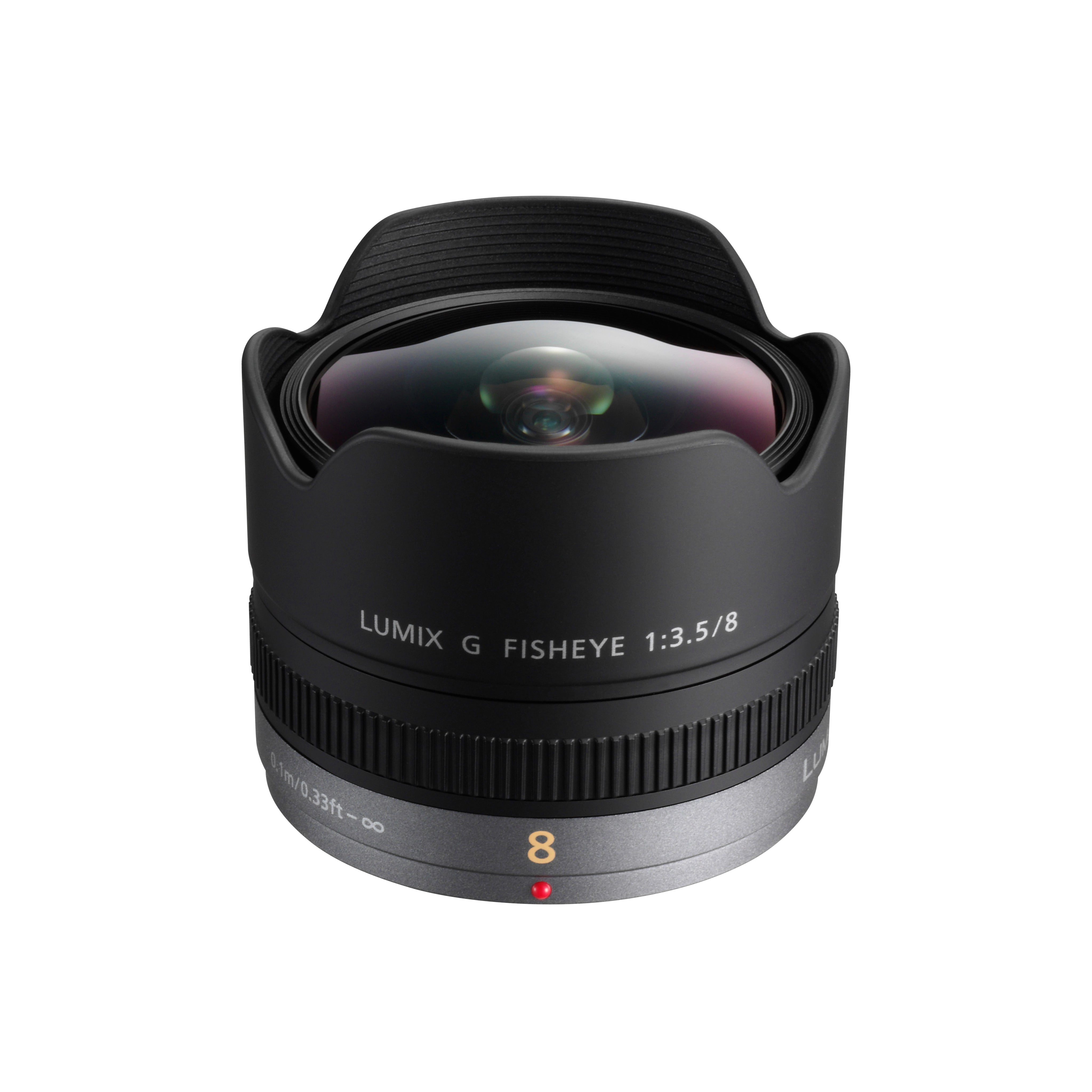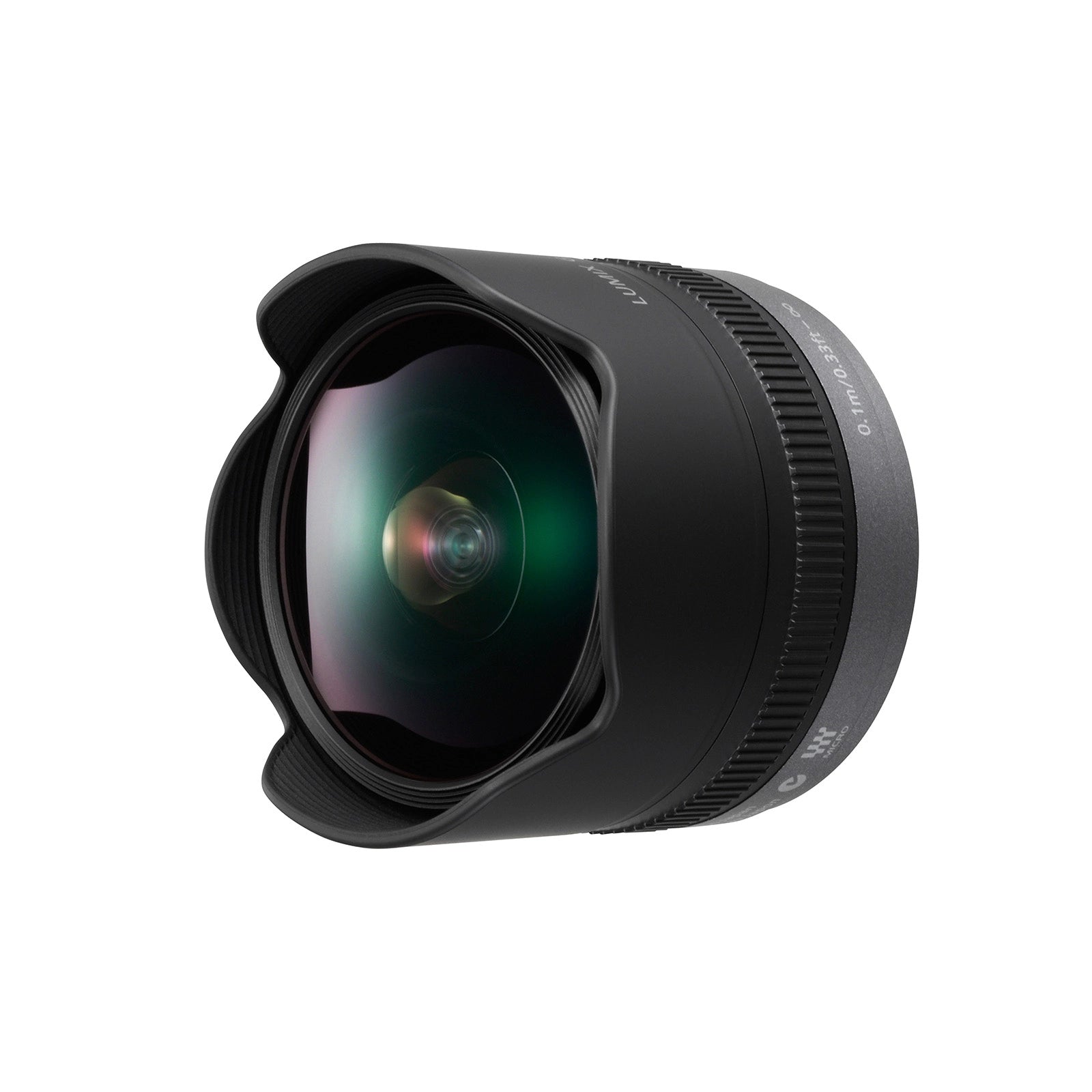Product Description
Capture the World in a New Perspective with the Panasonic 8mm F3.5 Lumix G Fisheye Lens
Unleash your creativity and explore the world from a whole new angle with the Panasonic 8mm F3.5 Lumix G Fisheye Lens. This small, lightweight, and versatile fisheye lens is designed for Micro Four Thirds cameras, offering an incredible 180-degree diagonal angle of view that delivers a distinctive and unique perspective. Whether you’re shooting stills or video, this lens transforms ordinary scenes into extraordinary moments, adding artistic flair and dynamic distortion to every shot.

180-Degree View for Dramatic Fisheye Effects
With a 180-degree diagonal angle of view, the Lumix G Fisheye 8mm lens allows you to capture dramatic, ultra-wide images with a distinctive fisheye distortion. Perfect for landscapes, architecture, and creative photography, this lens introduces an entirely new way of framing your shots. The exaggerated depth and curved horizon lines bring a sense of immersion and creativity that can’t be replicated with standard lenses. Whether you're shooting for fun or adding a unique effect to professional work, this fisheye lens delivers striking results.

Exceptional Optical Quality with ED Lens Element
Engineered with ten lenses in nine groups, including an ED (Extra-low Dispersion) element, this fisheye lens delivers superb optical performance. The ED element minimizes chromatic aberrations and distortion, ensuring sharp, high-quality images from edge to edge. Whether you're shooting at close range or at infinity, the Panasonic 8mm Fisheye maintains clarity and detail, allowing you to capture vibrant, true-to-life photos and videos with minimal optical flaws.

Close Focusing Distance for Creative Close-ups
Get up close and personal with your subjects thanks to the closest focusing distance of just 0.1m (0.33 feet). This allows you to capture stunning close-ups with exaggerated perspectives, perfect for unique portraits, macro-style shots, or any scene where you want to highlight intricate details. Despite its ultra-wide field of view, this lens is perfect for experimenting with extreme close-up photography, giving you complete creative freedom.

Inner Focus Drive for Smooth and Silent Operation
The Panasonic 8mm F3.5 Fisheye features an inner focus drive system that ensures smooth and silent focusing, even at short distances. This makes it perfect for both still photography and video recording, allowing you to capture quiet, precise autofocus without the distracting noise of a traditional focusing system. Paired with contrast AF support, this lens works seamlessly with Lumix G cameras to deliver fast, accurate focus performance.

Compact and Lightweight Design
Designed with the Micro Four Thirds system in mind, the Panasonic 8mm Fisheye Lens is incredibly compact and lightweight. Weighing just 165g, this lens is perfect for photographers and videographers on the go. Its small form factor makes it easy to carry with you, ensuring you're always ready to capture stunning fisheye shots, whether you're traveling, shooting action, or working on a creative project.
Perfect for Both Photos and Video
This fisheye lens isn't just for still photography—it also excels in video applications. The 180-degree angle of view adds a dynamic, immersive perspective to your videos, making it ideal for TV content, films, web movies, and more. Whether you're creating eye-catching social media content or working on a professional film project, the Lumix G Fisheye 8mm will enhance your storytelling with a unique visual twist.

Key Features at a Glance:
- 180-degree diagonal angle of view for distinctive fisheye distortion
- Aperture Range: f/3.5 for sharp, detailed images
- Compact and lightweight: Weighs just 165g
- Exceptional Optical Design: 10 lenses in 9 groups, including an ED lens for reduced chromatic aberrations
- Closest Focusing Distance: 0.1m (0.33 feet) for creative close-ups
- Inner Focus Drive System for smooth, silent focusing—perfect for stills and video
- Contrast AF support for high-speed, high-precision autofocus
- Compatible with Micro Four Thirds cameras, bringing out the full potential of your camera’s image sensor
Whether you're looking to capture wide-angle landscapes, creative close-ups, or unique video content, the Panasonic 8mm F3.5 Lumix G Fisheye Lens offers endless possibilities. Its combination of exceptional optical performance, compact design, and versatile functionality makes it the ideal lens for both photography enthusiasts and professionals seeking a distinctive edge.

Take your creativity to new heights with the Panasonic 8mm Fisheye lens. Discover a world of new perspectives and dramatic effects.
For full specifications and more details, click Here.
Payment & Security
Your payment information is processed securely. We do not store credit card details nor have access to your credit card information.


















